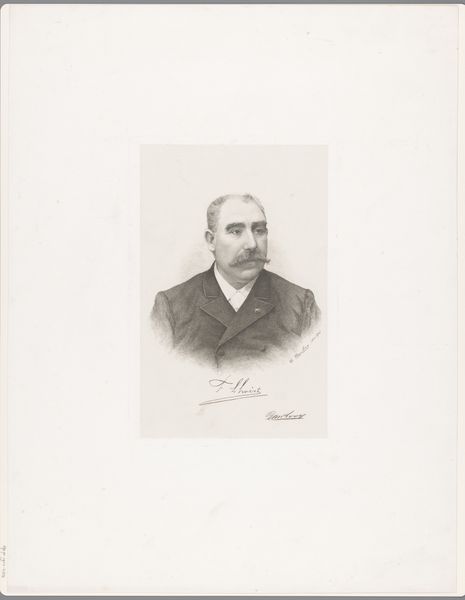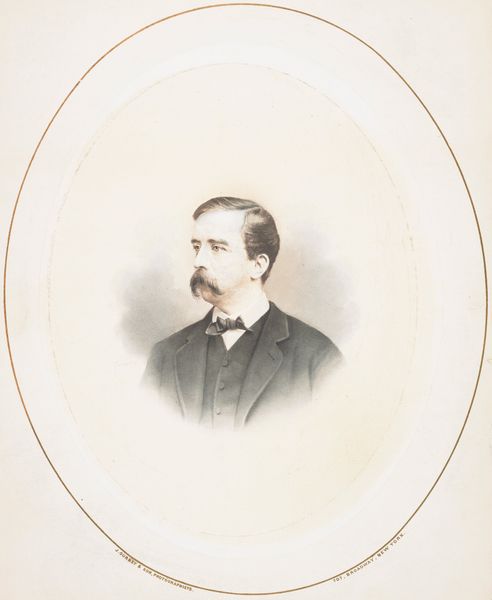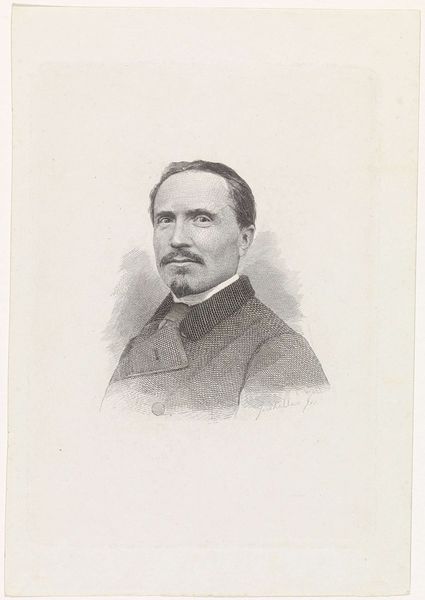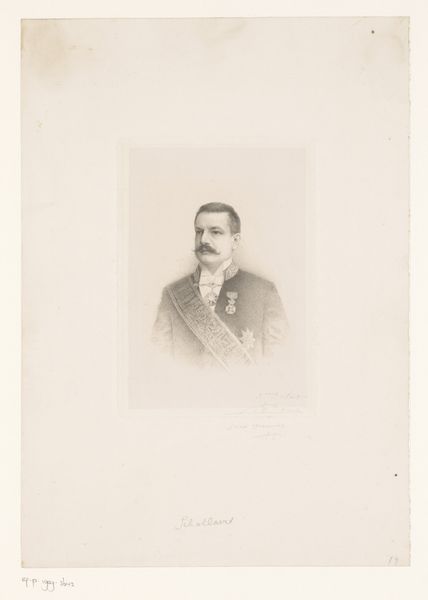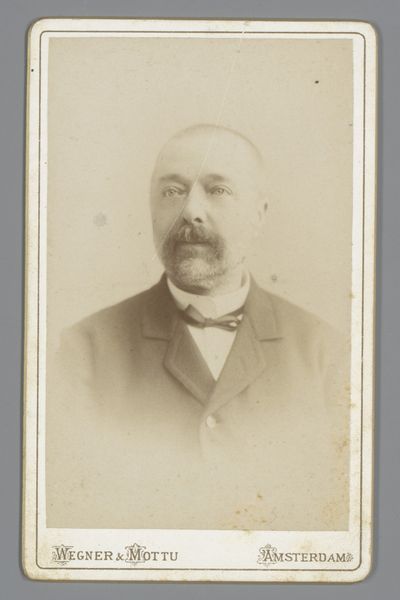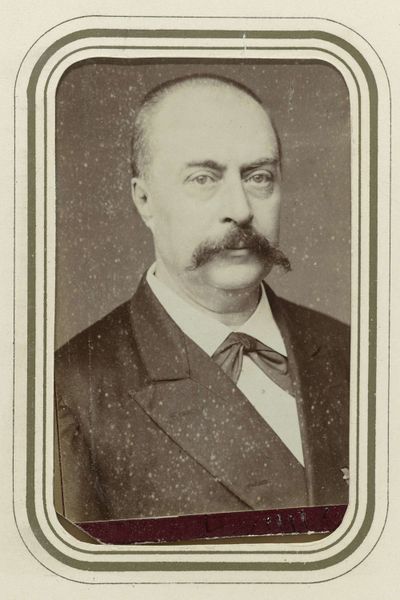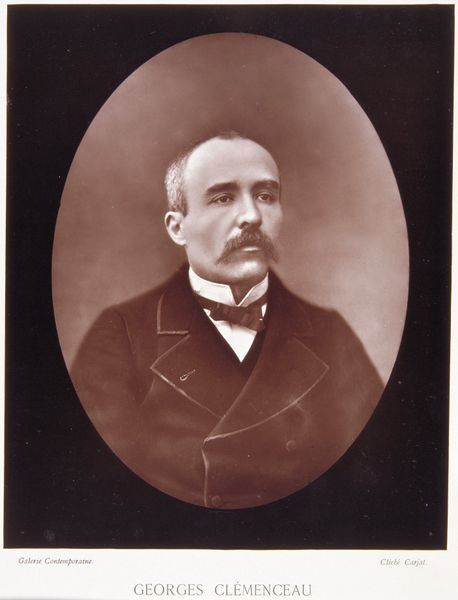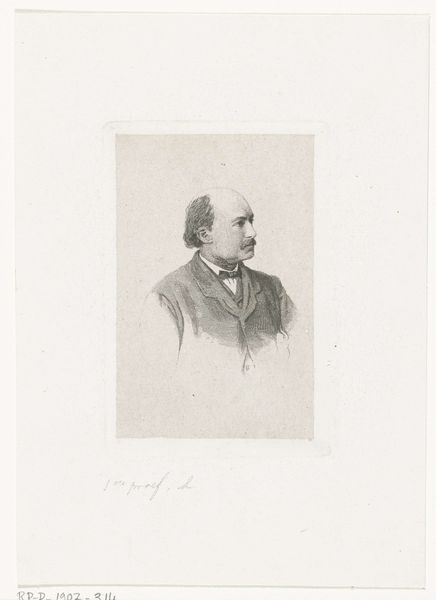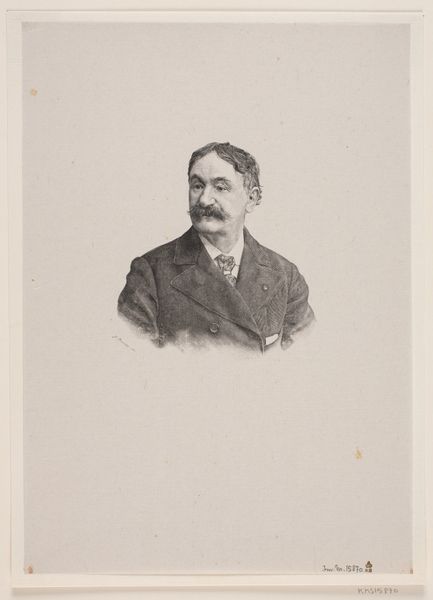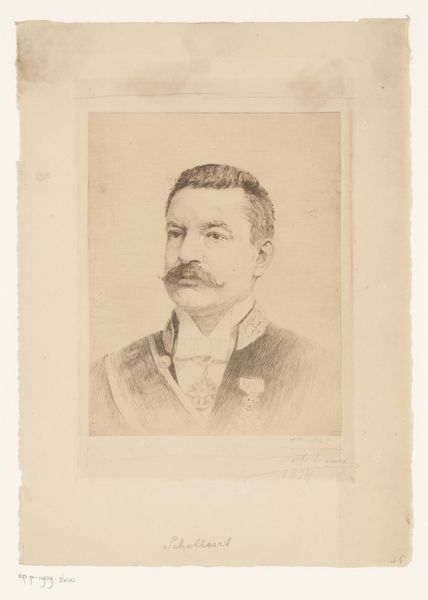
drawing, pencil
#
portrait
#
drawing
#
historical photography
#
pencil drawing
#
pencil
#
realism
Dimensions: height 298 mm, width 197 mm
Copyright: Rijks Museum: Open Domain
Curator: Let's consider this intriguing portrait rendered in pencil by Joseph Edouard Van Looy, sometime between 1881 and 1912. It is a likeness of Françoise L'Hoëst. Editor: My initial impression is one of reserve. The palette is muted, of course, being pencil on paper. But beyond that, there’s a stillness to the man, a formality. His mustache is impressive, almost like a mask. Curator: Masks and identity... precisely. Look at how the artist meticulously renders Françoise's features. But also consider how the portrait is placed. Note the date it was created, think about societal roles then, and tell me what power dynamics are visualized. How is masculinity presented here? Editor: He wears a dark jacket and light shirt with a dark, barely visible, tie. That look signifies middle-class respectability to me. The pin on his lapel indicates an affiliation. But the gaze… that’s what holds me. Curator: What do you find in his gaze? Editor: There is intensity but not arrogance. Maybe quiet determination, like the steady gaze we sometimes see in depictions of saints. The rendering of the light across his brow signifies thoughtfulness. I see intelligence, and even melancholy. Curator: It’s interesting that you interpret a certain melancholy in the rendering. Is this a comment on societal conditions as they existed during the late 19th and early 20th centuries? In what context should we place Françoise? And to what cultural archetypes does he conform or diverge from? Editor: You bring up an important question. Is Van Looy portraying Françoise, or a representation of patriarchy? Perhaps there's even an intentional echo of iconic, paternal figures – an almost stern father-image presented in a soft drawing style. Curator: It certainly invites broader reflection. This work allows for critical examination of societal structures embedded within portraiture and offers viewers a point of entry into thinking critically about identity and representation. Editor: Absolutely. Considering the potential layers of cultural memory contained within, it adds another dimension to this intriguing drawing.
Comments
No comments
Be the first to comment and join the conversation on the ultimate creative platform.
